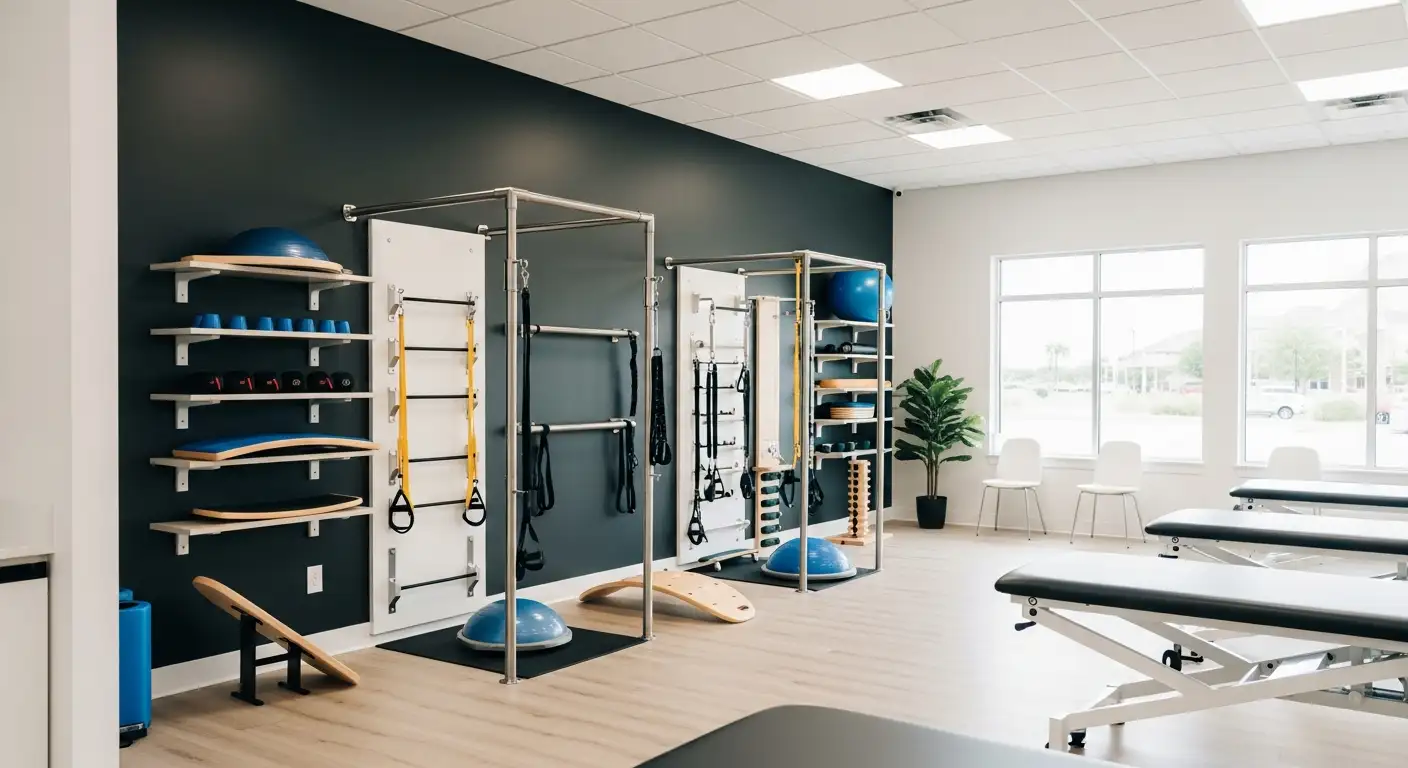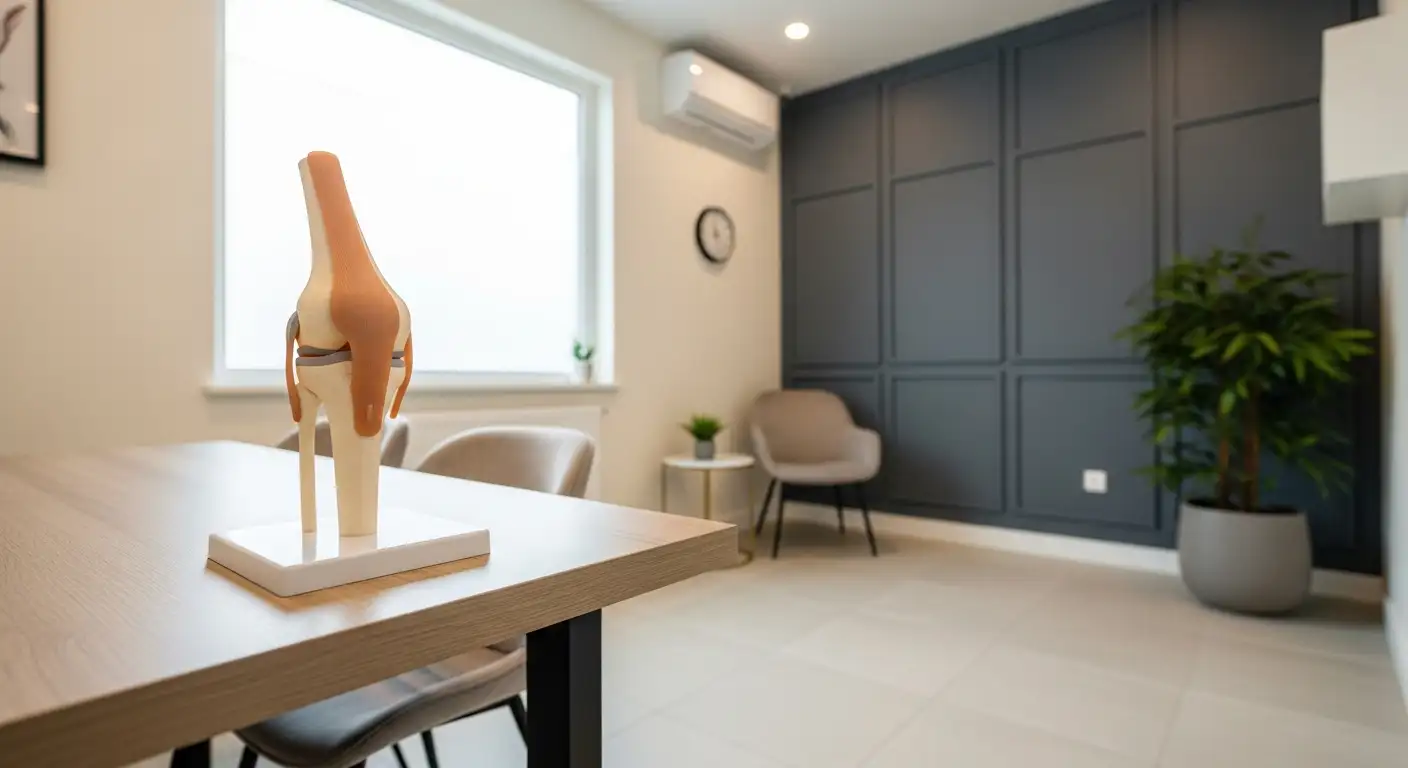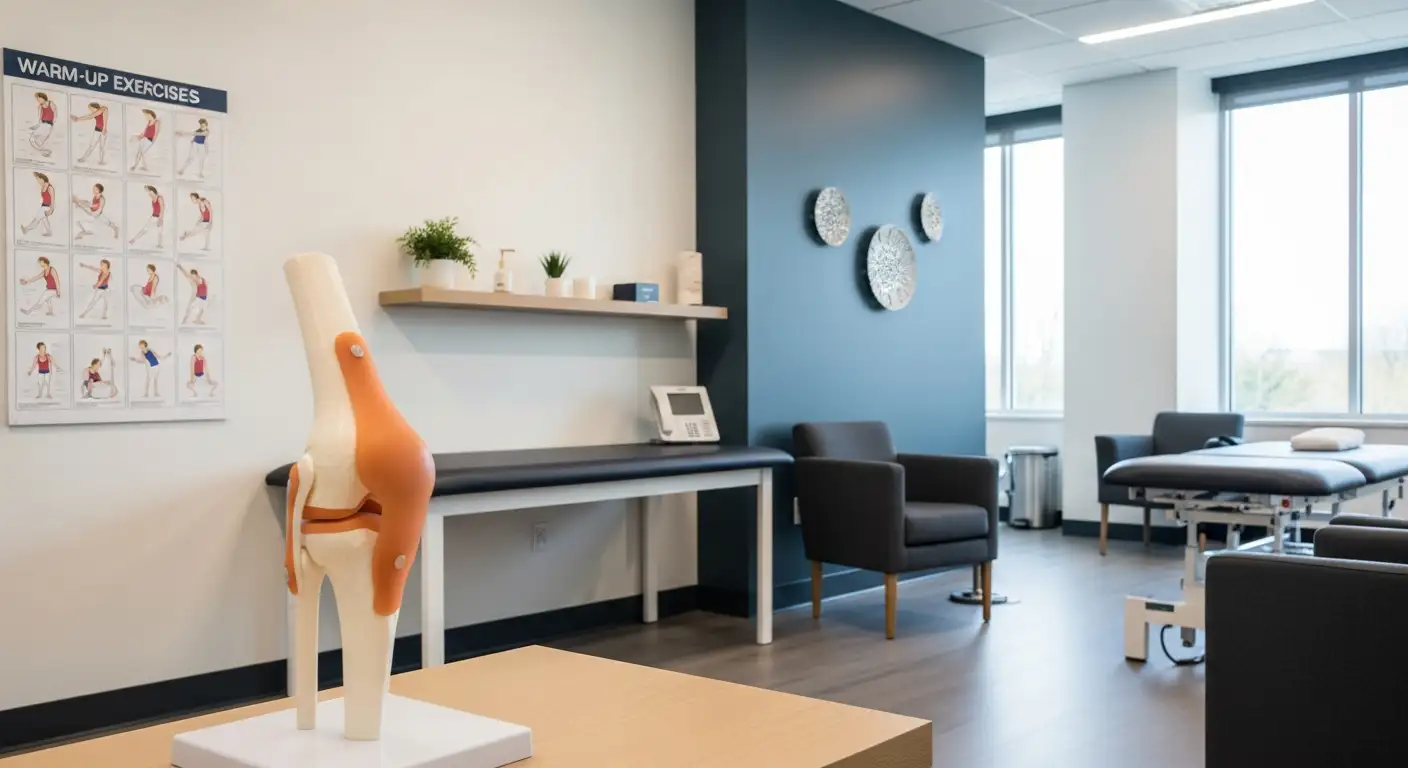Understanding Knee Surgery
Knee surgery is a common procedure undertaken to address a variety of knee-related health issues. Understanding the types of knee surgeries and their common reasons can provide a useful context while addressing the question of 'how long does pain last after knee surgery'.

Types of Knee Surgeries
There are various types of knee surgeries that range in complexity and severity. Some of the most common types include:
- Arthroscopy: This is a minimally invasive procedure that allows doctors to view the knee joint without making a large incision. Through small cuts, a thin tube with a camera on the end is inserted to guide the surgeon. This type of surgery is often used to diagnose and treat various knee problems.
- Partial Knee Replacement: This involves replacing only the damaged parts of the knee with artificial parts. It's typically recommended for those with damage on only one side of the knee.
- Total Knee Replacement: In this procedure, the entire knee joint is replaced with an artificial joint. It's commonly performed on people with severe arthritis or severe knee damage.
- ACL Reconstruction: The Anterior Cruciate Ligament (ACL) is one of the major ligaments in the knee. ACL injuries are common among athletes and this surgery involves replacing the torn ACL with a piece of tendon from another part of the body or from a donor.
- Meniscectomy: This is the surgical removal of all or part of a torn meniscus. A meniscus tear is a common knee injury, often caused by twisting or turning quickly with the foot planted while the knee is bent.
Common Reasons for Knee Surgery
Knee surgeries are typically recommended for a variety of reasons, including:
- Repairing ligament tears: Ligaments are the elastic bands of tissue that connect bones in a joint. The most commonly repaired ligament in the knee is the anterior cruciate ligament (ACL).
- Meniscus tears: The meniscus is a rubbery disc that cushions your knee. When damaged, a meniscectomy may be performed to remove or repair the torn part.
- Removing loose bodies: Sometimes injury or degeneration of bone or cartilage can cause bits of bone or cartilage to float in the joint space. These can be painful and may cause the knee to lock or limit movement.
- Bone fractures: Fractures of the bones in the knee often require surgery to properly align the bones and ensure they heal correctly.
- Knee replacement: In severe cases of arthritis or injury, knee replacement surgery may be recommended.
Understanding the type and reason for knee surgery is crucial to predicting factors such as the duration and severity of postoperative pain. Further sections will delve deeper into pain management strategies, the prevalence of pain post knee arthroscopy, and the long-term effects of knee surgery.
Post-Surgery Pain Explained
Pain after knee surgery is a common experience for many patients. Understanding the typical duration and causes of persistent pain can provide a clearer picture of what to expect during the recovery period.
Typical Pain Duration After Knee Surgery
Generally, postoperative pain following knee surgery or knee replacement is expected to improve with time. However, in some cases, patients can develop chronic, refractory, neuropathic pain that lasts beyond the typical recovery period. This type of pain persists beyond six months post-surgery and may indicate a neuropathic (nerve-related) issue.
Chronic postsurgical pain, defined as pain persisting at least three months post-surgery, is experienced by approximately one in five total knee arthroplasty (TKA) patients. This chronic pain condition is linked to lower patient satisfaction, increased societal and healthcare costs due to resource-intensive revision surgeries, and extended recovery periods [2].
Chronic pain after total knee arthroplasty can be defined as pain that is present and bothersome at least three to six months after surgery. Studies indicate that 10% to 34% of patients report unfavorable pain outcomes between three months and five years post-surgery, with 16% to 33% of patients experiencing chronic pain after TKA.
Causes of Persistent Pain
Persistent pain following knee surgery can result from various factors. One cause is nerve injuries that occurred during the procedure, or nerves becoming entrapped in scar tissue during recovery. When anatomical structures are moved during surgery, they might press on nerve tissue causing compression and subsequent symptoms [1].
Specific nerve issues can arise, such as transection of the infrapatellar branch of the saphenous nerve (IPBSN) during total knee arthroplasty, which can lead to numbness on the outside half of the knee or painful neuromas in rare cases. Symptoms from this nerve injury may progress slowly and intensify later post-surgery [1].
Damage to the peroneal nerve close to the fibula bone can occur during knee replacement surgery, leading to persistent lateral knee pain and loss of function in the foot or top/side of the foot after the surgery. Surgical decompression of the peroneal nerve to remove tight tissue around it can help alleviate pain.
Inadvertently cutting nerves during surgery or injury can result in the formation of neuromas, wherein a ball of nerve tissues forms, attaches to non-nerve tissues, and can cause intense painful symptoms when compressed or pulled. This can occur if the proximal part of the nerve regrows and connects to various tissues like muscles, bones, and scar tissue.
Understanding these potential causes of persistent pain after knee surgery can help patients and healthcare providers develop effective pain management strategies to aid in recovery and improve the overall quality of life post-surgery.
Impact of Preoperative Factors
Understanding the factors that may influence the duration of pain after knee surgery is crucial. Preoperative conditions, including the severity of preoperative pain and various psychosocial factors, significantly impact postoperative pain levels.
Role of Preoperative Pain
Studies show a direct correlation between the severity of preoperative pain and the intensity of pain experienced post-surgery. For instance, a study revealed that more preoperative pain correlated with more pain one year after total knee arthroplasty (TKA) PubMed. Similarly, higher preoperative pain scores are associated with persistent post-surgical pain (PPSP) after total knee replacement (TKR) or total hip replacement (THR) surgeries source.
Among the 61 factors analyzed from 29 reports involving 10,360 patients, the correlation between preoperative factors and more severe pain at twelve months post-TKA was significant. Factors such as pain catastrophizing, symptomatic joints, and preoperative pain showed different correlation coefficients, indicating varying levels of certainty of evidence associated with each factor's impact on pain outcomes PubMed.
Psychosocial Factors and Pain
In addition to the physical aspects, certain psychosocial factors also play a significant role in shaping the post-surgical pain experience. Notably, state anxiety scores and higher depression scores on the Beck Depression Inventory are associated with an increased risk of PPSP after TKR source.
Moreover, a person’s mental health status before surgery can also affect the intensity and duration of pain following knee surgery. Better mental health was correlated with less pain at six and three months post-surgery PubMed.
Overall, it becomes evident that various preoperative factors can significantly influence how long pain lasts after knee surgery. Therefore, a comprehensive preoperative assessment that includes both physical and psychosocial aspects can be beneficial in managing postoperative pain effectively.
Pain Management Strategies
Managing postoperative pain after knee surgery is vital to enhancing patient recovery, mobility, and overall satisfaction. Two effective pain management strategies are the multimodal analgesia approach and preemptive analgesia.
Multimodal Analgesia Approach
Multimodal analgesia is considered the optimal regimen for perioperative pain management after Total Knee Arthroplasty (TKA). It improves clinical outcomes and patient satisfaction through using a combination of several types of medications and delivery routes. These include preemptive analgesia, neuraxial anesthesia, peripheral nerve blockade, patient‐controlled analgesia, local infiltration analgesia, and oral opioid/nonopioid medications.
One form of multimodal analgesia is Local Infiltration Analgesia (LIA). LIA is performed by a surgeon intraoperatively without specialist equipment, typically near the conclusion of a procedure. Local anesthetic combined with opioids, antibiotics, NSAID, or epinephrine (cocktail) are injected into periarticular regions. These injections directly prevent the generation and conduction of pain signals from the incision. Recently, LIA has become an alternative analgesic regimen to femoral nerve block (FNB) without resulting in impairment of quadriceps muscle strength. Despite its effectiveness, there is no consensus on the optimal composition and infiltration technique of LIA.
Preemptive Analgesia and Its Benefits
Preemptive analgesia is an antinociceptive intervention that begins before a surgical procedure. It is more effective than the same intervention when started after surgery. The purpose of preemptive analgesia is to prevent peripheral and central hypersensitivity, decrease the incidence of hyperalgesia, and reduce the intensity of postoperative pain. Preemptive analgesia also increases the pain threshold, contributing to lower postoperative use of analgesic medication.
Notably, Cyclooxygenase‐2 (COX‐2) inhibitors, such as parecoxib sodium and celecoxib, administered 30–60 min before surgery significantly decrease postoperative pain and morphine consumption without increasing the incidence of other postoperative complications.
These pain management strategies form a critical part of the overall approach to reducing pain after knee surgery. By understanding these strategies and their benefits, patients and healthcare providers can work together to create a comprehensive pain management plan, ultimately leading to improved recovery outcomes.
Pain after Knee Arthroscopy
Knee arthroscopy is a common surgical procedure used to diagnose and treat problems in the knee joint. However, like any invasive procedure, it can lead to post-operative pain. Understanding the factors that influence this pain can help in managing it effectively.
Factors Influencing Post-Arthroscopy Pain
Several factors can influence the level of pain a patient experiences after knee arthroscopy. In a study on 78 male patients who underwent this procedure, it was found that post-operative time was the most significant factor related to post-arthroscopy knee pain. Supplementary analgesia was required in 23% of the patients, more frequently in the recovery room and between 2 and 8 hours postoperatively.
Pre-operative pain level also played a role. Patients with a middle pre-operative pain level exhibited on average more post-operative pain than patients with a low pre-operative pain level. This difference was significant during the first 6 post-operative hours. Supplementary analgesia was more frequently required in patients with a middle pre-operative pain level.
The type of arthroscopy also had an impact. Diagnostic arthroscopy resulted in less post-operative pain on average compared to arthroscopic meniscectomy, although the difference was not statistically significant. Supplementary analgesia was only required for patients who underwent arthroscopic meniscectomy.
Pain Management in Arthroscopy
Managing pain after knee arthroscopy is crucial for the patient's comfort and recovery. In the aforementioned study, patients were evaluated by the Visual Analogue Scale (VAS) at multiple time points post-surgery: 2, 4, 6, 8, 12, 16, 24 hours. Supplementary analgesia was administered when the VAS exceeded 3, and all patients were mobilized between the 6th and 8th hours post-operatively.
Eighteen patients (23.1%) required supplementary analgesia after knee arthroscopy, with seven of them needing it twice. The need for supplementary analgesia was more common in the recovery room, followed by the 8th and 2nd postoperative hour [5].
Pain management after knee arthroscopy involves a combination of regular pain evaluations, appropriate use of analgesics, and early mobilization. The goal is to control pain while minimizing the need for supplementary analgesia. By understanding how long pain lasts after knee surgery and the factors that influence it, patients and healthcare providers can better manage post-operative pain and enhance recovery.
Long-Term Effects of Knee Surgery
Knee surgery, while a common procedure, does have long-term effects. The two key factors to consider are the lifespan of knee replacements and the quality of life post-surgery. Both of these elements can provide insight into what can be expected after undergoing knee surgery.
Lifespan of Knee Replacements
According to the American Society of Anesthesiologists, knee replacements can be expected to last at least 15 years, with some lasting 20 years or longer. The patient's age is a significant factor when deciding between surgery and other pain management alternatives.
However, it's important to note that while a knee replacement may last for many years, the patient may still experience pain. Chronic pain after total knee arthroplasty can be defined as pain that is present and bothersome at least three to six months after surgery. Studies indicate that 10% to 34% of patients report unfavorable pain outcomes between three months and five years post-surgery, with 16% to 33% of patients experiencing chronic pain after TKA [3].
Quality of Life Post-Surgery
The quality of life post-surgery is a significant consideration for anyone contemplating knee surgery. Chronic pain after total knee arthroplasty (TKA) can impact all dimensions of health-related quality of life, leading to functional limitations, depression, anxiety, poorer general health, sleep problems, and long-term opioid use. Older individuals with chronic pain after TKA might experience social isolation and pain-related distress.
In the United Kingdom, chronic pain management accounts for 4.6 million general practitioner appointments per year, costing approximately £69 million. The economic impact of chronic pain after TKA on individuals, healthcare services, and society is largely unknown, requiring further research to evaluate its substantial potential costs.
In conclusion, while knee surgery can provide relief from chronic knee pain and improve mobility, it's vital to consider its long-term implications. Patients should discuss these factors with their healthcare providers to make informed decisions about their treatment options.
References
[1]: https://www.baltimoreperipheralnervepain.com/blog/knee-pain-after-surgery.cfm
[2]: https://www.ncbi.nlm.nih.gov/pmc/articles/PMC10038299/
[3]: https://www.ncbi.nlm.nih.gov/pmc/articles/PMC6134884/





